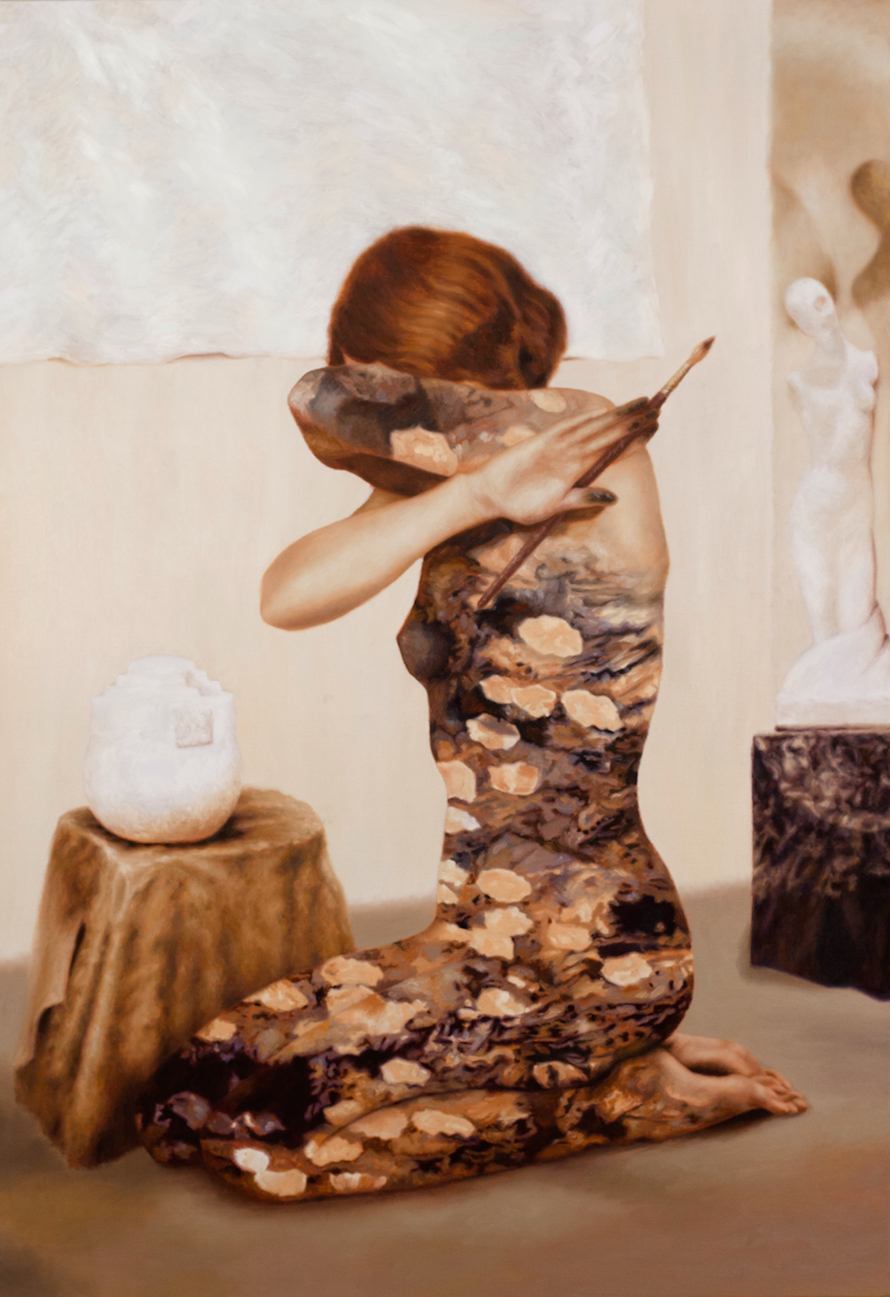History of Magic
Alison Blickle’s paintings—full of ceremony, mysticism, and sisterhood—remain electric with desire, even when the object of desire is a mystery.

The Morning News: You’ve said your paintings enable you to live out fantasies through characters you create. What aspects of the “History of Magic” series are most fulfilling to you?
Alison Blickle: The world in my “History of Magic” paintings is full of ritual, mysticism, and sisterhood. [The paintings] depict a person going on a journey that challenges her, and helps her to become strong, confident, and capable. She’s living a life where everything she does, even her mistakes, is important and sacred. These things are really appealing to me. Continue reading ↓
All images used with permission, courtesy and copyright © the artist, all rights reserved.










Interview continued
TMN: How important is narrative to your work?
AB: For the last few years I’ve been making paintings based on a folktale-type story that I created. I love mythology, the idea that universal stories can help us through difficult parts of life. I wanted to create a character I could follow through a long journey that has parallels to things in my own life. By the end of the story she’ll be changed, and I will be too.
Having a narrative as a guide helps me come up with ideas for imagery, but it’s not important to me that a story be apparent to the viewer. Once I start painting, the narrative goes completely out of my mind and I’m just trying to make a good painting on a formal level.
TMN: You’re based in Los Angeles. Do you feel connected to the history of the LA art scene?
AB: I went to grad school in New York, so I wasn’t taught to look at the tradition of LA artists. I moved here in 2009, and I’ve had to pick up on the history of the LA art world here and there. It’s a little tough going to school in one place, becoming part of a community, then moving away to a new place. But the artists here have always been really welcoming and supportive.
I’m from California, so the energy of LA feels really familiar and good to me. I think the art world in LA is influenced by that energy, so in that sense there is some part of the history here that I feel connected to.
To me, LA holds two truths at once. Just like people. On one hand—the light, the sun, the ocean, the desert, the feeling that dreams can come true here, that anything is possible, that you can come here and become whoever you want to be. You can come here and explore yourself. You don’t have to be bound by the laws and rules of other parts of our country. But there’s also an underlying current of darkness, of dreams that didn’t come true, of desperation, of people seeking validation and love. I like that contrast of the sunny place of dreams and the smoggy place of desperation.
TMN: Who’s the last artist to really surprise you?
AB: The last artist to surprise me is my friend Alika Cooper, an LA artist. She made loose, brushy figure paintings for years, then switched to fabric-based collages that are hard-edged and sometimes abstract. I love it!
TMN: What about you—aren’t you ever tempted to leave painting behind?
AB: No way. I can’t believe how lucky I am to get to make paintings as my job. It’s my dream come true. If I didn’t get to, I’d like to be living in the woods or the desert and doing something with plants.
TMN: When are you at your most confident as a painter?
AB: I’m most confident with my technical abilities—so, realistically painted faces, hands, etc. But I think you aren’t evolving and pushing your work unless you’re doing something that you don’t feel confident about. So I’m trying to learn to be comfortable with and enjoy the parts of painting where I don’t know what I’m doing, because that means I’m in new territory. And that’s where I want to be.
TMN: Elvis Presley reportedly said, “I’m not trying to be sexy. It’s just my way of expressing myself when I move around.”
AB: I think for any kind of artist, their work is a reflection of their personality and impulses. If we are being true to ourselves in our work, then we’re not trying to be anything. Who we are is just naturally coming out and being expressed. So maybe at the end of the day Elvis wasn’t trying to be sexy, he just was sexy.
